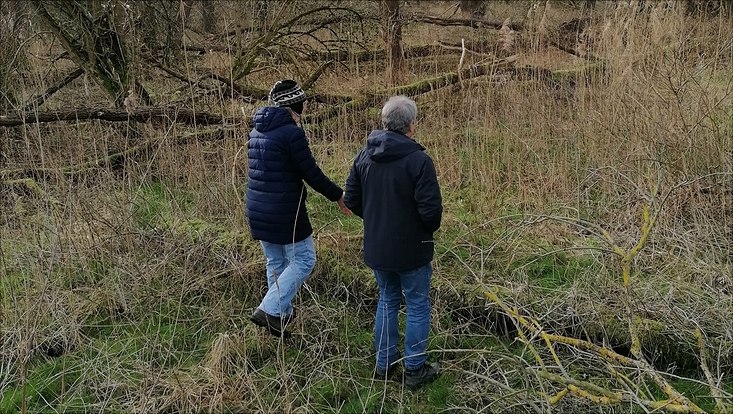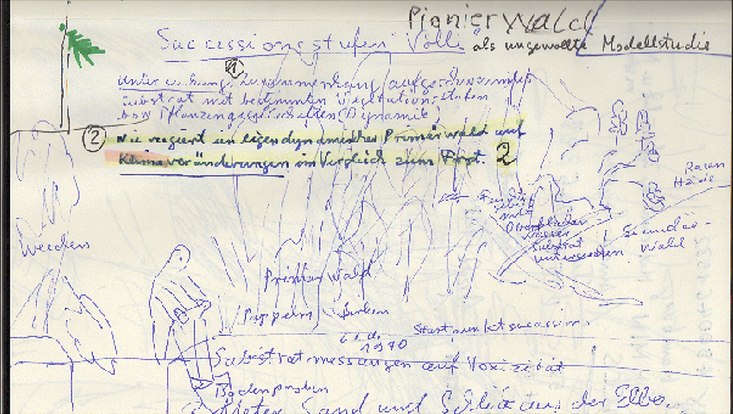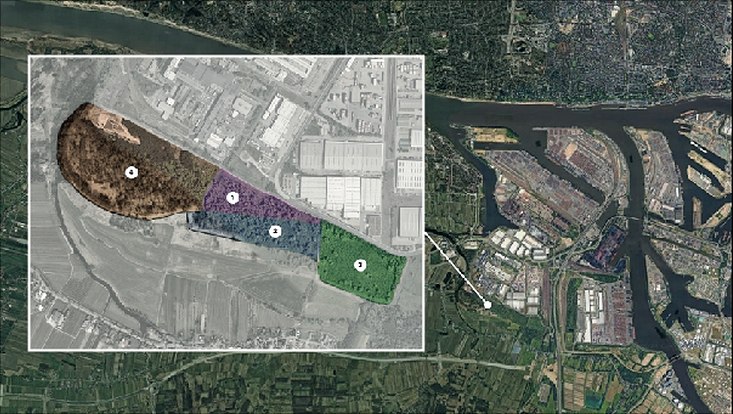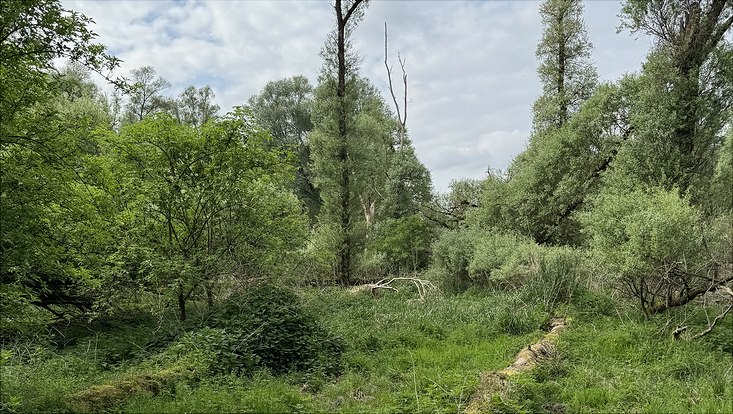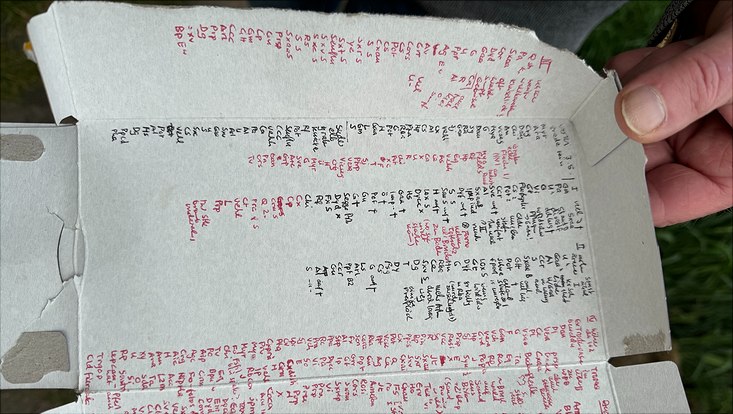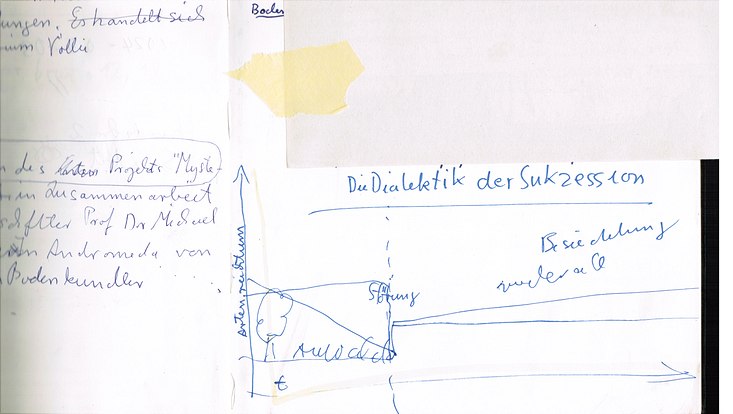Mysterium Völlii
Unnoticed and almost mysteriously, an impressive forest has developed over a period of 50 years on the outskirts of the Hamburg port - the Vollhöfner Forest. In the 1970s, port sediment was deposited on the riverbed of the Alte Süderelbe over an area of around 75 hectares to expand the port area. However, the area was never used and fell into oblivion, allowing nature to develop undisturbed. A few years ago, the Hamburg Port Authority planned to build logistics halls there. This seriously threatened the existence of the Vollhöfner Forest. Thanks to several years of protests by a citizens' initiative, the Vollhöfner Forest is finally to be placed under nature protection.
The artist Nana Petzet suggested the Vollhöfner Forest as a project area to Michael Köhl, professor of World Forestry. The result was an artistic-scientific field study as part of "Portraits of Climate". In February 2024, they explored the partially inaccessible terrain and developed the basic idea of illustrating the self-healing powers of nature using the example of the Vollhöfner Forest. This floodplain landscape, which was once used as a landfill site for sediments, some of which were heavily contaminated, has been transformed into a natural forest - an impressive example of non-anthropogenic succession. Michael is fascinated by this remarkable "reconquest of nature". "Under the title 'Mysterium Völlii', we want to look back at this reckless act of environmental destruction as an opportunity," explains Nana.
"I think this could be really an enrichment if you take a totally new road that you never took before.“ – Prof. Dr. Michael Köhl
During further excursions and with the help of Andromeda v. Prondzinski, Ute Schmiedel, and Janne Ludewig from the botany department and Mathias Spieckermann and Günter Miehlich from the soil science department, the team carried out the artistic-scientific research. Four flushing areas with different sediments were created in the 1970s. These sediments have different physical and chemical properties, which in turn affect the flora, predominantly a softwood floodplain with willows, poplars and birches, and the fauna. 'Mysterium Völlii' explores connections between soil and natural succession and offers the opportunity to marvel at the unique and essential abilities of soils. In the artistic project, succession is also made visible as a cooperation between plants and animals through specimens from university collections.
"I even need the collaboration. I need the data and I also need the expertise. Though, I want to develop the questions together." – Nana Petzet
Unintentionally, 50 years ago, the Hamburg Port Authority created a remarkable succession model that can provide valuable insights into a climate-stable and sustainable forest if systematically researched. The mystery lies in the self-appropriation of a territory by plants – the succession. This "compensatory measure" proves to be a gift that merely requires the abstention of use.
VG Bild-Kunst, Bonn
References
Poppendieck, Hans-Helmut/Schreier, Helmut: Baumland. Was Bäume erzählen, Hamburg 2020.
Gauss, Silvia: Joseph Beuys Gesamtkunstwerk Freie- und Hansestadt Hamburg 1983/84, Wangen/Allgäu 1995.
Umweltschutzgruppe Physik-Geowissenschaften: Wasser in Hamburg, Hamburg 1983.
Ahrens, Susanne: Sedimentaufbau sandiger Auftragsflächen im Hamburger Hafengebiet und seine Bedeutung für die Sickerwasserqualität, Diplomarbeit im Studiengang Geographie Uni Hamburg, 1991.
Ludewig, Janne: Natürliche Sukzession eines ehemaligen Spülfeldes des Hamburger Hafens seit mehr als 50 Jahren - Aufbau und Struktur des Vollhöfner Waldes, Bachelorarbeit im Studiengang Biologie Uni Hamburg, 2023.

